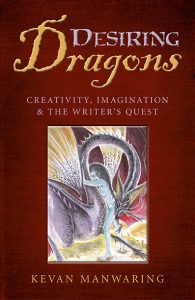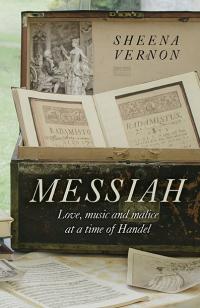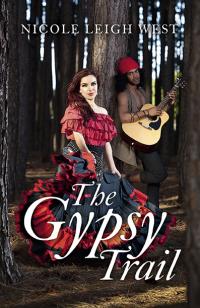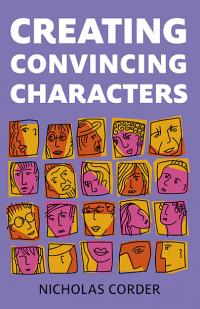
 ‘This is a regrettably true tale such as no correct thinking person
ought to regard seriously.’
‘This is a regrettably true tale such as no correct thinking person
ought to regard seriously.’James Branch Cabell
To define something as nebulous as Fantasy is to perhaps attempt an impossible task – the kind of thing a hapless heroine will be forced to undertake in a fairy tale: to sort rice grains from wheat, needles from straw, the false from the true.
As a genre, it is notoriously difficult to pin down – like an over-sized worm in a fairy tale; it has a tendency to wriggle away. In The Encyclopaedia of Fantasy (1999) John Clute gives voice to this, saying that Fantasy is: ‘a most extraordinarily porous term, and has been used to mop up vast deposits of story which this culture or that – and this era or that – deems unrealistic.’ He cites Brian Atteberry’s notion that Fantasy is a ‘fuzzy set’, which can best be described through ‘prescriptive and exploratory example’.
Yet, to avoid this quest slipping through our fingers, we need something solid to hold onto, to guide us. A phial of Elendil to light our way, or a Sting-like blade to glow blue when we encounter an ugly untruth.
One could argue that all fiction is imaginative to a lesser or greater extent, but in Fantasy the imaginary is emphasised. In fact, perhaps the only sustainable definition of the genre is that it is only limited by your imagination.
However, it is wise to begin with the familiar, the reliable, before venturing out into more chancy territory. The good old ‘Strider’ of a guide, the OED (the fit-for-the-wilderlands concise version), defines it as the following:
Fantasy (n): the faculty or activity of imagining improbable or impossible things.
- a genre of imaginative fiction involving magic and adventure
The latter is the popular perception of the term, but the primary definition remains obscure – as though an etymological version of The Man in the Iron Mask has occurred, with one definition locked up in an oubliette, while the other basks in the glory. It is time to release the lesser known aspect (the Faculty; as opposed to the Genre) from the dungeon — a key aspect which is often sadly lacking in Fantasy fiction.
It is important to distinguish between those immortal twins, Science Fiction and Fantasy, although this is notoriously difficult. Arisen from the same gene pool of the imagination, they have been raised in very different ways, and encountered wildly divergent fates – yet they are often conjoined in bookshops under the ‘Science Fiction and Fantasy’ category. Sometimes firstborn Fantasy is even subsumed under its later sibling – all books of a fantastical nature lumped under ‘SF’ – who Set-like wishes to slay his brother. But Fantasy rises Osiris-like in the Underworld of the Subconscious, where he resides – the archetypal judge of all our endeavours. It is the source of all invention. Fantasy is the Nile, from which a vast delta of subgenres has been generated. At best, Science Fiction might be classed as the ‘Lower Nile’ – but that makes it no less important than its older sibling, even if he may carry some dream-silt from more ancient lands.
But, perhaps we need a less poetic analogy, or demarcation – to stop the Nile of Fantasy from flooding all the lands of minds and men.
Robert Silverberg has a crack at it, in his introduction to The Fantasy Hall of Fame, but admits ‘the impossibility of making any of these definitions stick: ‘Science Fiction is that branch of Fantasy which one generally deals in extrapolations of the consequences of technological development, and which attempts to stick fairly rigorously to known or theoretically possible scientific concepts. Fantasy is a much broader field of fiction that is less firmly bound to the tyranny of fact, and for the purposes of any given story is permitted to assume nearly any idea as plausible, though it is desirable for the author to elicit a suspension of disbelief through the plausible development of a basically unlikely notion.’
For the record, my working definition is that Science Fiction has, at its core, a rationalist/scientific explanation of the universe; while Fantasy offers a magical or mythic explanation. Of course, there are always exceptions to the rule, and with new discoveries in science (quantum physics especially) the boundaries between science and mysticism are blurring (territory authors such as Philip Pullman explores in His Dark Materials trilogy).
JRR Tolkien is perhaps the greatest Fantasy writer of all time; certainly he is incredibly influential and possibly the most emulated author in fiction (i.e. endless Sword and Sorcery pastiches). He disliked the use of allegory (unlike his fellow Oxford inkling, CS Lewis), and liked to describe his stories as Fairy Stories in the truest sense, that is, set in an Otherworld: ‘most good fairy tales are about adventures of men in the Perilous Realm’. He argues that the successful writer of ‘fairy stories’ is one who: ‘makes a Secondary World which your mind can enter. Inside, what he relates is ‘true’: it accords with the laws of that world.’ It has an internal logic – consistency, causality and an ecology of its own (often sharing some laws with our own world, i.e. gravity, night and day, hunger, sleep).
In an exploration of several famous Secondary Worlds, Realms of Fantasy, Edwards and Holdstock say: ‘The writer must not cheat: the laws governing the invented world may be different from our own, but they must be applied consistently.’ Essential qualities are Realism and Conviction – the author has to totally believe in their world, and if they do so thoroughly and skilfully enough, they may make the reader forget that it is invented, or at least willingly suspend their disbelief.
Not all Fantasy is set in a Secondary World, but it is by far the most common trope. A Secondary World Fantasy: ‘takes place in an invented world, which may or may not have some doorway into our own.’ A general survey of different kinds of Secondary Worlds include: Stories set in the ancient past; Stories set in present-day lost worlds; Stories set on other planets; Stories set in the distant future; Stories set on Fantasy Earths quite separate from our own but with affinities to it. Notice that many of them tread in Science Fiction territory, but it all depends on the ‘explanation’ behind the Way Things Work, as well as language, or tone, e.g. there is a world of difference between William Gibson’s Neuromancer and Michael Ende’s The Never-Ending Story (both imaginative fiction of the Eighties).
Fantasy is the means by which we may imagine and enter into other worlds. It is closely associated with Imagination – it provides a gateway. However, Tolkien goes to great lengths to elucidate on the difference between Fantasy and Imagination. Firstly, he defines the latter as ‘the power of giving to ideal creations the inner consistency of reality.’ Having established this, he then goes on to tease out the quintessential difference with Fantasy:
‘The mental power of image-making is one, or aspect; and it should appropriately be called Imagination... The achievement of the expression, which gives (or seems to give) ‘the inner consistency of reality’, is indeed another thing, or aspect, needing another name: Art, the operative link between Imagination and the final result, Sub-creation.’
For the purposes of his essay, ‘On Fairy Stories’, Tolkien sought a word which embraced: ‘both the Sub-creative Art in itself and a quality of strangeness and wonder in the Expression, derived from the Image.’ This quality, essential, to fairy-story, he sums up as ‘Fantasy’. He cites one of its chief effects as ‘arresting strangeness’, and although he acknowledges some people bridled at this (‘They dislike any meddling with the Primary World, or such small glimpses of it as are familiar to them’), he refutes their misconception – that Fantasy is mere idle dreaming. He argues that true Fantasy is ‘difficult to achieve’.
To create a world so convincing that it ‘commands or induces a Secondary Belief’ is something Tolkien says requires the art of elvish art of enchantment: ‘To the elvish craft, Enchantment, Fantasy aspires, and when it is successful of all forms of human art most nearly approaches.’
Let us end this brief examination by citing Tolkien one last time, who declares: ‘Fantasy is a natural human activity. It certainly does not destroy or even insult Reason; and it does not either blunt the appetite for, nor obscure the perception of scientific verity. On the contrary. The keener and the clearer the reason, the better the Fantasy will it make.
This last caveat is a critical one. Any who venture into the twilight realms of Fantasy need a sharp sword and a keen eye, to avoid being mired in the swamps of soft-focus whimsy, mazed in the caverns of cliché, or assailed by the plague of plagiarism.
At its best, Fantasy forges something of beauty and substance so real, so alluring we want to step into it and live there.
CS Lewis describes coming across a copy of Phantastes: ‘The glorious week end of reading was before me. Turning to the bookstall, I picked out... Phantastes, a faerie Romance, George Macdonald. That evening I began to read my new book... I met there all that already charmed me in Malory, Spenser, Morris... But in another sense all was changed... It was Holiness.’
Fantasy creates imaginary, magical worlds that do not exist, but so skilfully, that we wish them to be true, at least for a little while.
Buy Paperback: AMAZON US AMAZON UK INDIEBOUND
Buy eBook: AMAZON US AMAZON UK INDIEBOUND
This article was first published in The Writer's Wheel Magazine Issue 3
Categories:
0 comments on this article







